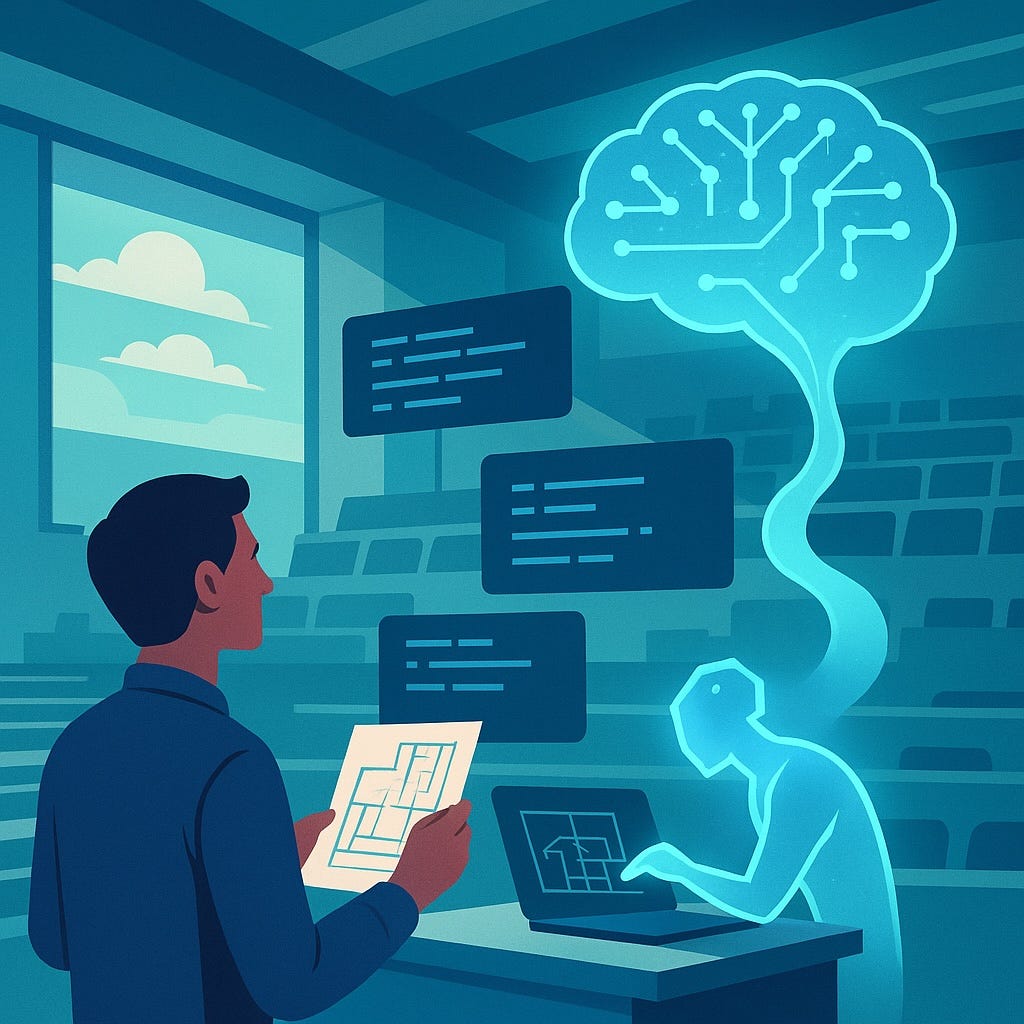How We Built an AI Checkpoint with Face ID for a U.S. Construction Site and Saved the Developer Hundreds of thousands of Dollars
On a construction site, hundreds of workers, dozens of subcontractors, and tons of materials intersect daily. While excavators are digging the foundation, fake time entries can “dig” holes in payroll, and phantom deliveries may be recorded for materials that never arrived. All of this eats into profits, delays timelines, and creates compliance risks. We solved the issue of “ghost workers” at the gate by building BuildGuard — a smart Face ID terminal that identifies workers in fractions of a second, verifies their access permits, and updates the attendance log without a single click from an administrator.
• 4 min read

Business Case: Why a Smart Checkpoint Matters in U.S. Construction
On large construction projects, subcontractors often inflate crew sizes, bring unauthorized equipment on-site, or record materials that were never delivered. Based on the client’s internal audits, direct losses from these practices can easily reach several million dollars annually.
The management team needed a solution that:
- Eliminates fake workers — only individuals who physically pass through the checkpoint are counted.
- Provides transparent reporting on attendance and overtime while automatically generating subcontractor claims.
- Operates fully autonomously — no manual input, no legacy turnstiles, no complex integrations.
Business Impact in the First 3 Months
| Metric | Before | After | Annual Savings |
|---|---|---|---|
| Ghost workers | ~7% of shifts | <0.5% of shifts | ≈ $250,000/year |
| Unverified overtime | 1 hr/worker weekly | 0.1 hr/worker | ≈ $120,000/year |
| Manual reporting costs | 16 hr/week | 0 hr | ≈ $75,000/year |
BuildGuard Architecture
We acted as the primary AI contractor for the BuildGuard – Smart Gate Control project. The system consists of three core layers:
- Edge terminal with Face ID (10-inch touchscreen, camera, microcomputer).
- Cloud platform for biometric and event storage.
- Web dashboard with reports, alerts, and an API for payroll/ERP systems.
The system can be deployed in a single day: the terminal mounts to a pole or trailer, connects via 4G/LTE, and starts operating immediately, even with unstable connectivity (caching up to 10,000 templates).
User Workflow
- A worker taps their NFC badge at the terminal; the camera captures their face.
- In 0.25 seconds, the system verifies the face against the badge.
- The screen displays “Access Granted” or “Denied.”
- The attendance log updates in real time, and if there’s a mismatch (e.g., badge and face don’t match), the site supervisor gets an instant push notification.
- A daily summary report is automatically sent to the security lead via email.
Technical Backbone: Adapting AI Face ID to U.S. Construction Conditions
Face Detection: RetinaFace in the Cloud, YOLO v8 on the Terminal
We tested several models and chose a hybrid approach. RetinaFace runs in the cloud for batch processing since it’s better at detecting partially covered faces. For the edge terminal, where speed is critical, we run a lightweight YOLO v8, fine-tuned on a dataset of helmeted, dusty faces. It’s converted to TensorRT with INT8 calibration — detection now takes just milliseconds.
Face Embeddings: ArcFace with a “Construction Dataset”
ArcFace-ResNet100 serves as the backbone, pre-trained on millions of faces. We fine-tuned it on our custom dataset: first freezing the backbone, training only the classifier, then unfreezing the final layers to adapt to helmet edges, shadowed visors, and dusty environments. We integrated Focal Loss to handle rare worker samples, pushing accuracy at strict thresholds to nearly 98%.
Database Search: FAISS as a “Turnstile Without Hardware”
For on-device storage of thousands of employees, we use IVF-PQ indexing, allowing searches within a few hundred microseconds. Larger databases keep only the “active” shift locally, with the rest stored in the cloud using HNSW shards. Updates propagate through Kafka, so new hires appear on all checkpoints within seconds.
Continuous Learning
Each day, the system saves low-confidence frames for supervisor review in the dashboard. Overnight, the pipeline fine-tunes the model for a few epochs and deploys updates using a Blue-Green rollout: 10% of terminals first, then 50%, then all. Rollback is instant with a single Helm command — ensuring zero downtime.
Anti-Spoofing
To block printed selfies or videos, the terminal checks for two cues: correct corneal reflections under natural lighting and micro-movements of eyelids over five frames. A combination of SiLDR-based reflection modeling and a small CNN on optical flow reduces spoofing attempts to negligible levels.
MLOps Without Guesswork
All experiments are tracked in MLflow, datasets are versioned in DVC, and GitLab CI builds containers, stores them in S3, and deploys Helm charts. Grafana monitors speed, accuracy, and embedding drift, with proactive alerts before any issue impacts operations.
Conclusion:
BuildGuard turned the checkpoint from a cost center into a transparent control hub: eliminating ghost workers, saving millions in payroll, reducing paperwork, and giving management a real-time site overview. With our custom construction dataset, hybrid architecture (RetinaFace + YOLO v8 + ArcFace), and automated retraining, we maintain 98% accuracy and release new models weekly without halting operations.
Want a digital “shield” for your site? Request a demo, and you’ll get a custom report based on your data.
Ready to discuss how AI checkpoints can cut losses on your U.S. projects?


